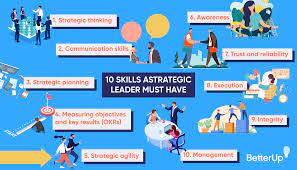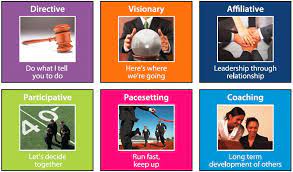The 10 Components of a Successful Leadership Strategy
A successful leadership strategy must have 10 key components in order to be effective. These components are a clear vision, inspiring and motivating employees, setting measurable goals, providing adequate resources, maintaining open communication, exhibiting ethical behavior, displaying strong decision-making skills, demonstrating a commitment to lifelong learning, fostering innovation, and encouraging collaboration.
Vision is the first and most important component of a successful leadership strategy. A leader must have a clear sense of where they want to take their team or organization. Without a vision, it is impossible to set goals or create a plan of action. Inspiring and motivating employees is the second component. A leader must be able to motivate their team in order to achieve results. Setting measurable goals is the third component. A leader must be able to set realistic and achievable goals that can be tracked and measured.
Providing adequate resources is the fourth component. A leader must ensure that their team has the resources they need in order to be successful. Maintaining open communication is the fifth component. A leader must keep lines of communication open at all times in order to promote transparency and trust within the team. Exhibiting ethical behavior is the sixth component. A leader must always act in an ethical manner in order to gain the respect and trust of their team members.
Displaying strong decision-making skills is the seventh component of a successful leadership strategy. A leader must be able to make tough decisions quickly and efficiently in order to keep the team on track
nursing leadership styles
There are many different nursing leadership styles, but there are 10 components that are essential for a successful leadership strategy. These components are:
1. A clear and inspiring vision.
2. The ability to develop and articulate a strategic plan.
3. The ability to build an effective team.
4. The ability to delegate and empower others.
5. The ability to communicate effectively.
6. The ability to motivate and inspire others.
7. The ability to make tough decisions.
8. The ability to handle conflict effectively.
9. The ability to lead by example.
The different types of nursing leadership styles and when to use them.
There are four main types of nursing leadership styles: autocratic, democratic, transformational, and transactional. Each has its own strengths and weaknesses, so it’s important to choose the right style for the situation at hand.
Autocratic leaders make all the decisions without input from others. This can be efficient when time is of the essence or when there is a clear hierarchy in place. However, this style can also lead to resentment from team members who feel they are not being heard.
Democratic leaders encourage input from their team before making decisions. This fosters a sense of ownership and buy-in from team members but can result in decision-making paralysis if everyone has a different opinion.
Transformational leaders inspire their teams to achieve more than they thought possible. This type of leader is often able to motivate people to go above and beyond their normal job duties. However, transformational leadership can be difficult to maintain over long periods of time.
Transactional leaders focus on exchanging rewards for performance. This type of leader sets clear expectations and provides tangible incentives for meeting those expectations. Transactional leadership can be effective in getting people to meet specific goals, but it does not typically foster long-term motivation or
How to develop a successful leadership strategy.

There is no one-size-fits-all answer to this question, as the best leadership strategy will vary depending on the specific goals and objectives of the organization. However, there are some key elements that should be included in any effective leadership strategy. First, it is important to clearly define what success looks like for the organization. Without a clear understanding of what is to be achieved, it will be difficult to develop an effective plan. Once the goals have been established, it is important to identify the key players who will be responsible for achieving them. These individuals must have the necessary skills and experience to lead the way toward success. Finally, a successful leadership strategy must include a system of accountability, so that everyone involved knows exactly what their role is and how they are expected to contribute. By following these steps, you can develop a leadership strategy that will help your organization achieve its desired results.
The benefits of having a successful leadership strategy.
A successful leadership strategy can bring many benefits to an organization. It can help to improve communication and collaboration between team members, increase productivity, and build a strong sense of team spirit. Additionally, a successful leadership strategy can help to attract and retain top talent, as well as create a positive work environment that employees are happy to be a part of. Ultimately, a successful leadership strategy can have a positive impact on the bottom line of an organization. When everyone is working together efficiently towards common goals, the organization as a whole is able to achieve great things.
principles of leadership
There are many different principles of leadership that can be beneficial to a leader in achieving success. However, there are 10 key principles that are essential for any leader looking to create a successful leadership strategy. These 10 principles are as follows:
1) Establish a clear vision and purpose for your team or organization. Without a clear vision, it will be difficult to provide direction and focus for your team.
2) Set goals and objectives that are realistic and achievable. Trying to achieve unrealistic goals will only lead to frustration and disappointment.
3) Develop a positive attitude and approach to leadership. A positive attitude will inspire others and help to build morale within your team.
4) Be open-minded and willing to listen to new ideas. Being closed-minded will limit your ability to learn and grow as a leader.
5) Be decisive when necessary. Indecision can lead to stagnation and frustration within your team.
6) Be flexible and adaptable in your leadership style. rigidity will only make it difficult to effectively manage change or crisis situations.
7) Be consistent in your words and actions. Inconsistency will only confuse and mislead those you are leading.
8) Communicate effectively with your team or organization. Poor communication will lead to misunderstanding and mistrust.
9) Lead by example. Your actions as a leader should always reflect the values and standards you expect from others.






